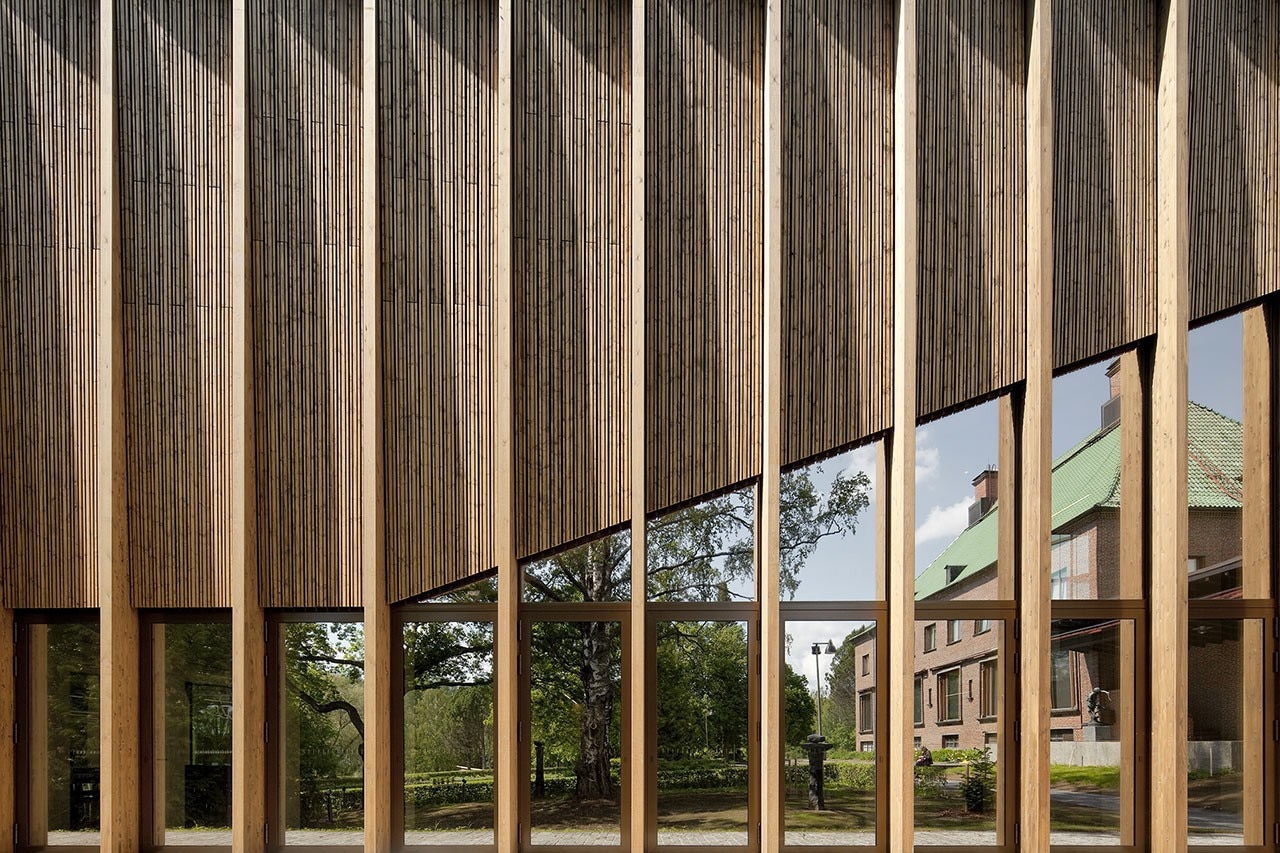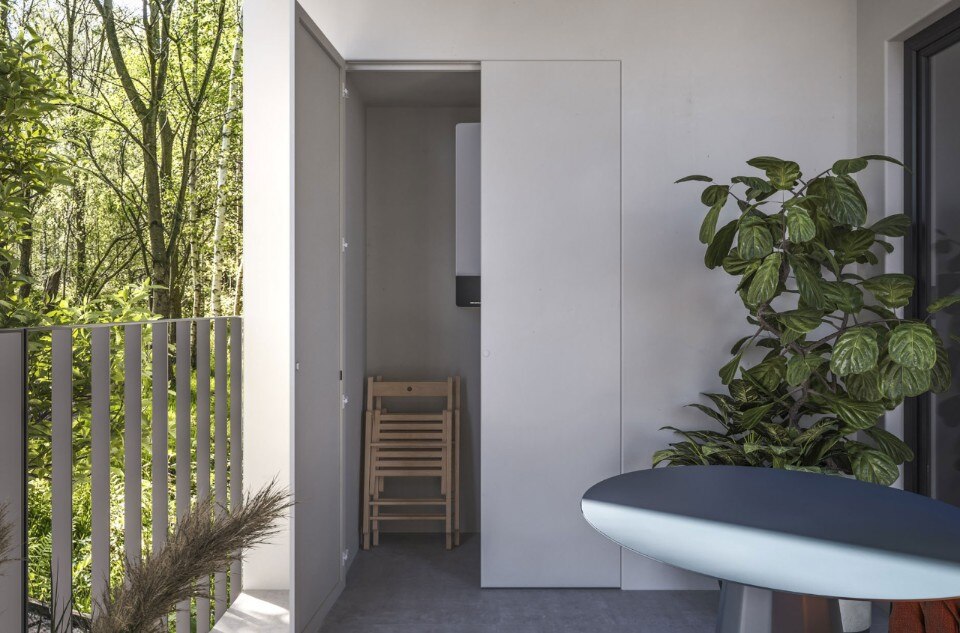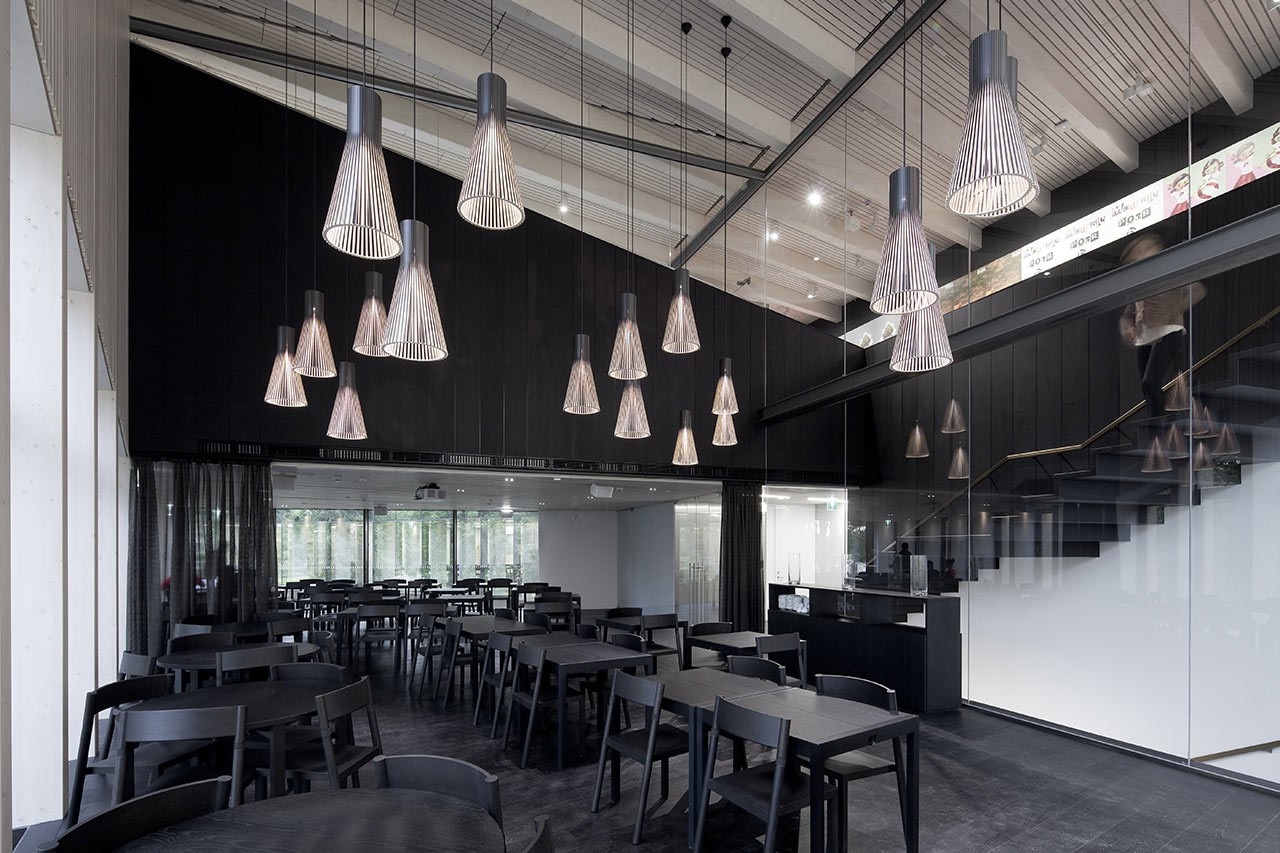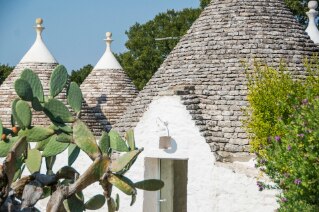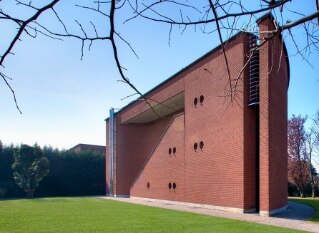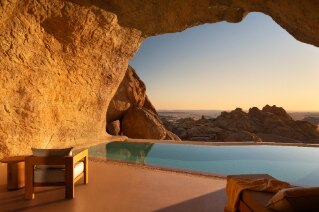
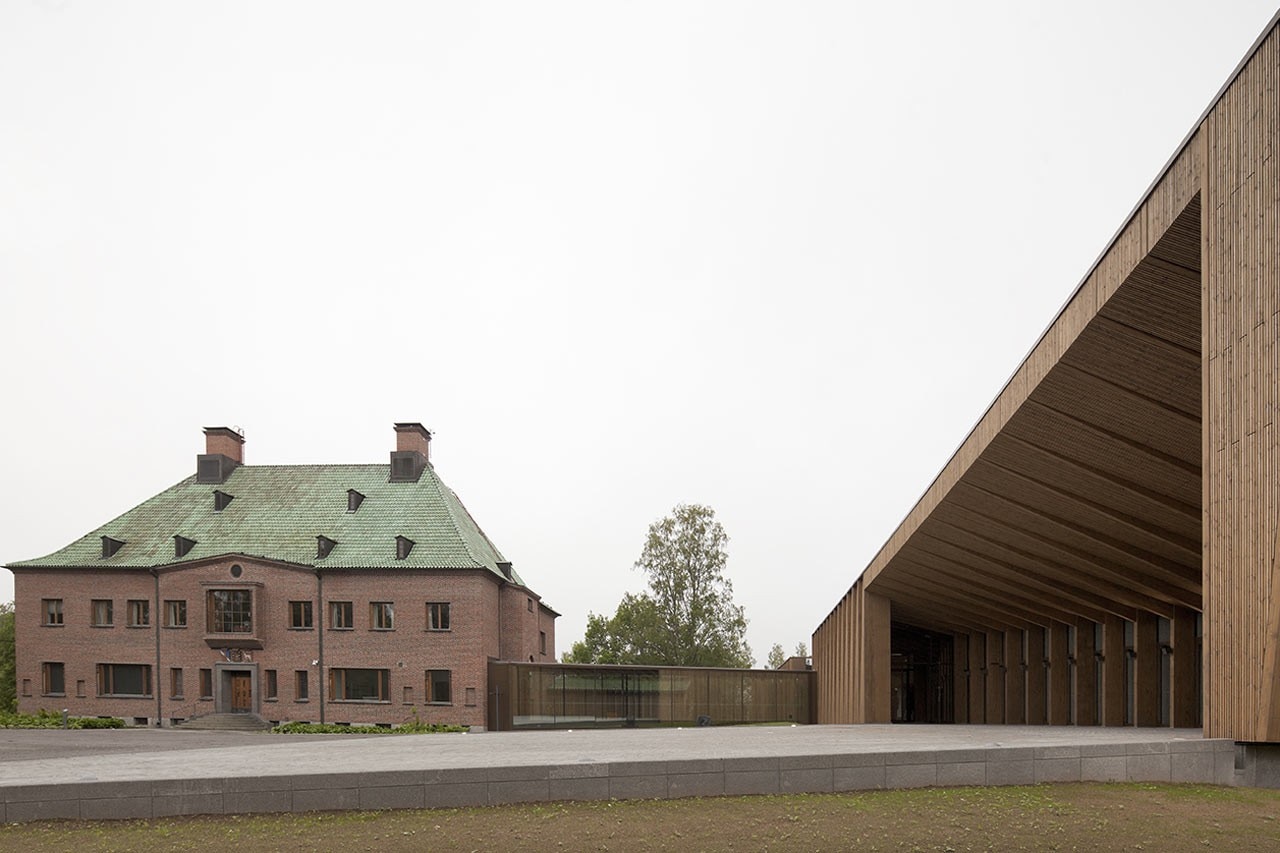
As a starting point, the place is understood as a large green canvas with the imposing monolithic figure of the Joenniemi Manor House at its highest point. A landscape which together with the old house comprises a heritage with cultural significance for the citizens of Mänttä and the Serlachius family.
The project strategy is to establish a dialogue between the new and the existing by positioning the new construction so that Joenniemi continues to take centre stage, and at the same time the new museum does not lose the opportunity to express its character and contemporary presence. The solution was therefore to arrange the new volume parallel to the axis established between the house, the garden and the lake. An access plaza to the building was created, where the Joenniemi building continues to dominate the vistas of the area, and as the land descends and approaches the lakeside the new building becomes higher and more prominent.
The project is conceptualized as an abstract and dense forest. A forest that represents and translates into a series of parallel wooden frames that define the geometry and structure of the new building. The structural framework is constructed with laminated spruce wood as it is abundant in the area and in turn makes an historical reference about the local industry.
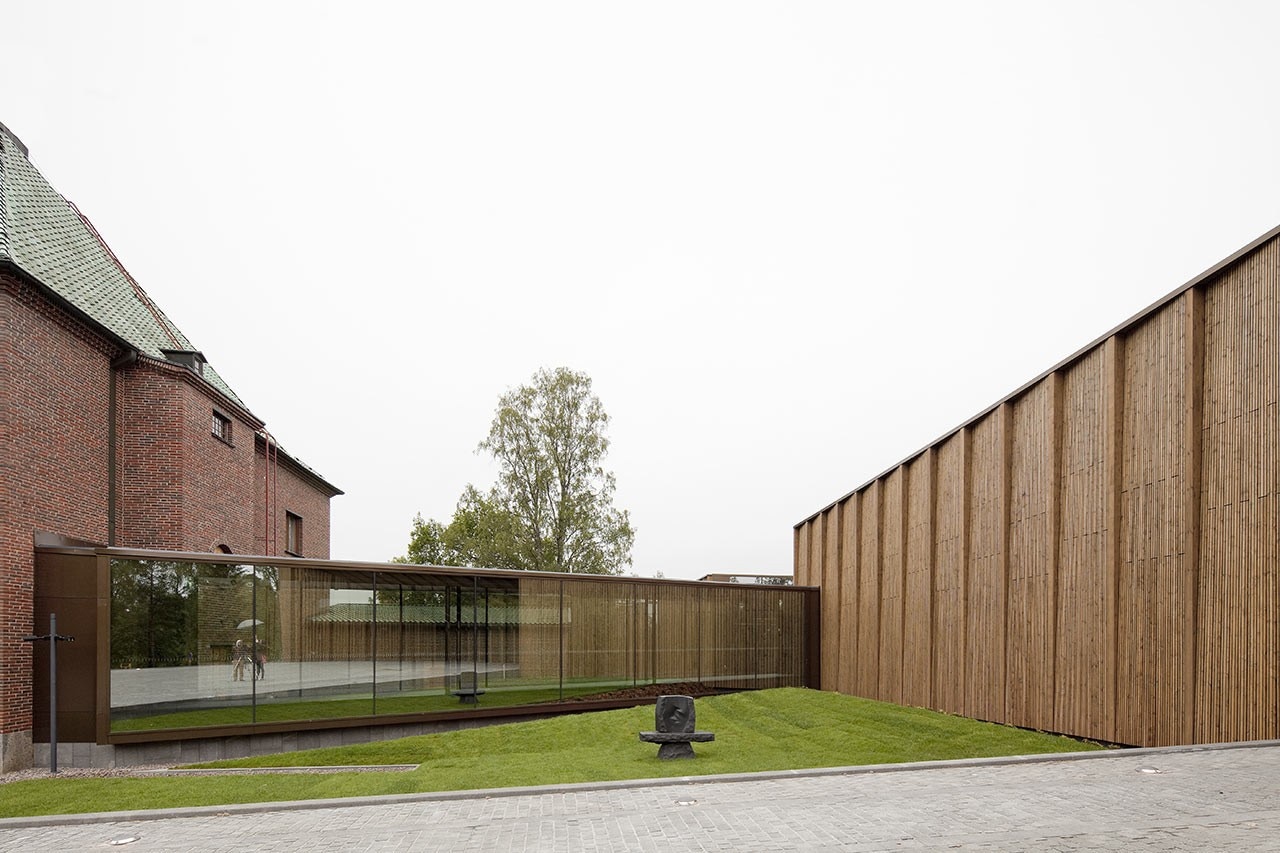
On the outside, the building presents a series of vertical mullions that follow and emphasize the rhythm of the interior structure. Between the mullions a ventilated facade system was designed of spruce wood strips twisted independently to the tectonic limit of the material itself, thereby achieving an effect of a three-dimensional texture that varies along the entire elevation.
The facade idea also considered the effect of time on a living material like wood, so it was decided to add a semi-transparent golden hue to all its elements. During the first years the building will thus maintain a consistent image that will fade to make way for the desired silver tones that characterize this wood as it ages.
To reduce the visual impact of a building in such a sensitive environment, the building seeks to decompose into smaller fragments. The volume is interrupted by certain cuts, or irregularly shaped incisions, which are covered with a reflective glass surface. The result of these incisions is the perception of spaces of infinite mirrors; doors or forest walkways optically subdividing the building transversely.
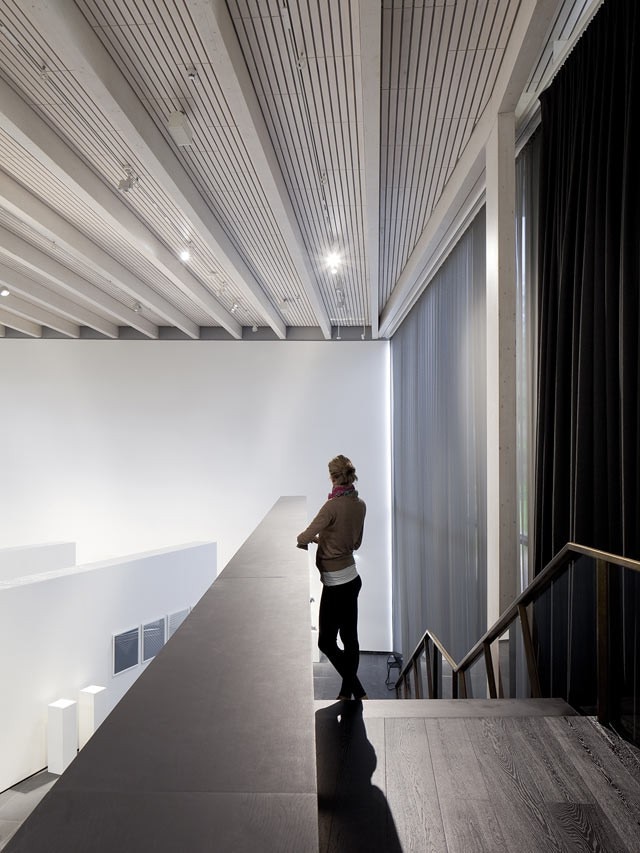
Technically, this project represents one of the first examples of large-scale public buildings in Finland to have been built with structures, external walls and finishes in wood. Despite the strict fire regulations, it was possible to leave the structural wooden frames visible inside the entire building. It was important to avoid covering the structure to perceive the smooth texture of the material and the curved surface of the ceiling accentuated by the steady rhythm of the beams.
This structure was also designed to give greater flexibility to the interior spaces when planning future exhibitions. Supports have been left at the sides thus freeing up on building elements and releasing the central parts of the galleries, the frames have also been calculated to be able to hold pieces of large scale works of art which can even be hung from the roof beams.

Gösta Serlachius New Contemporary Art Museum, Mänttä, Finland
Program: museum
Architects: MX_SI (Boris Bežan, Héctor Mendoza, Mara Partida)
Team: Oscar Fabian Espinosa,Olga Bomač, Elsa Bertran, Mariona Oliver, Jure Kolenc
Local Architect: Huttunen-Lipasti-Pakkanen Architects Oy
Structural Consultant: A-Insinöörit Oy
Electrical Consultant: Sähkötekniikka Kari Siren Oy
Landscape Architect: Maisemasuunnittelu Hemgård
Geo Consultant: Ramboll Finland Oy
Project Manager: Pöyry CM Oy
HVA-Consultant: AIRIX Talotekniikka Oy
Fire Consultant: Pöyry Finland Oy
Sign design: Petitcomite
Construction company: Jämsän Kone- ja Rakennuspalvelu Oy
Budget: € 19,500,000 (Museum); € 500,000 (Bridge)
Area: 5,700 sqm
Completion: 2014
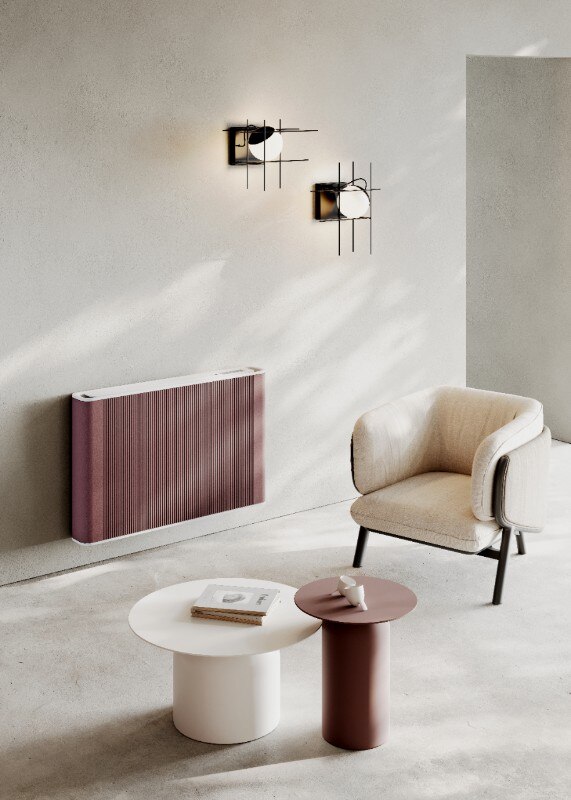
Technology meets aesthetics, with Cordivari
With their rhythmically textured external surfaces, the Run and Seven Lines fan coils become natural elements in the landscape of contemporary interiors.


